Redundant Clock Reference
Redundant Clock Reference, a fully comprehensive solution that adds together maximum reliability, robustness, modularity, performance and cost optimization.
The Multi-Band and Multi-Constellation operation of the GNSS receivers make this solution very robust, not anymore dependent of just a single positioning system, and with the capability to track a very high number of satellites.
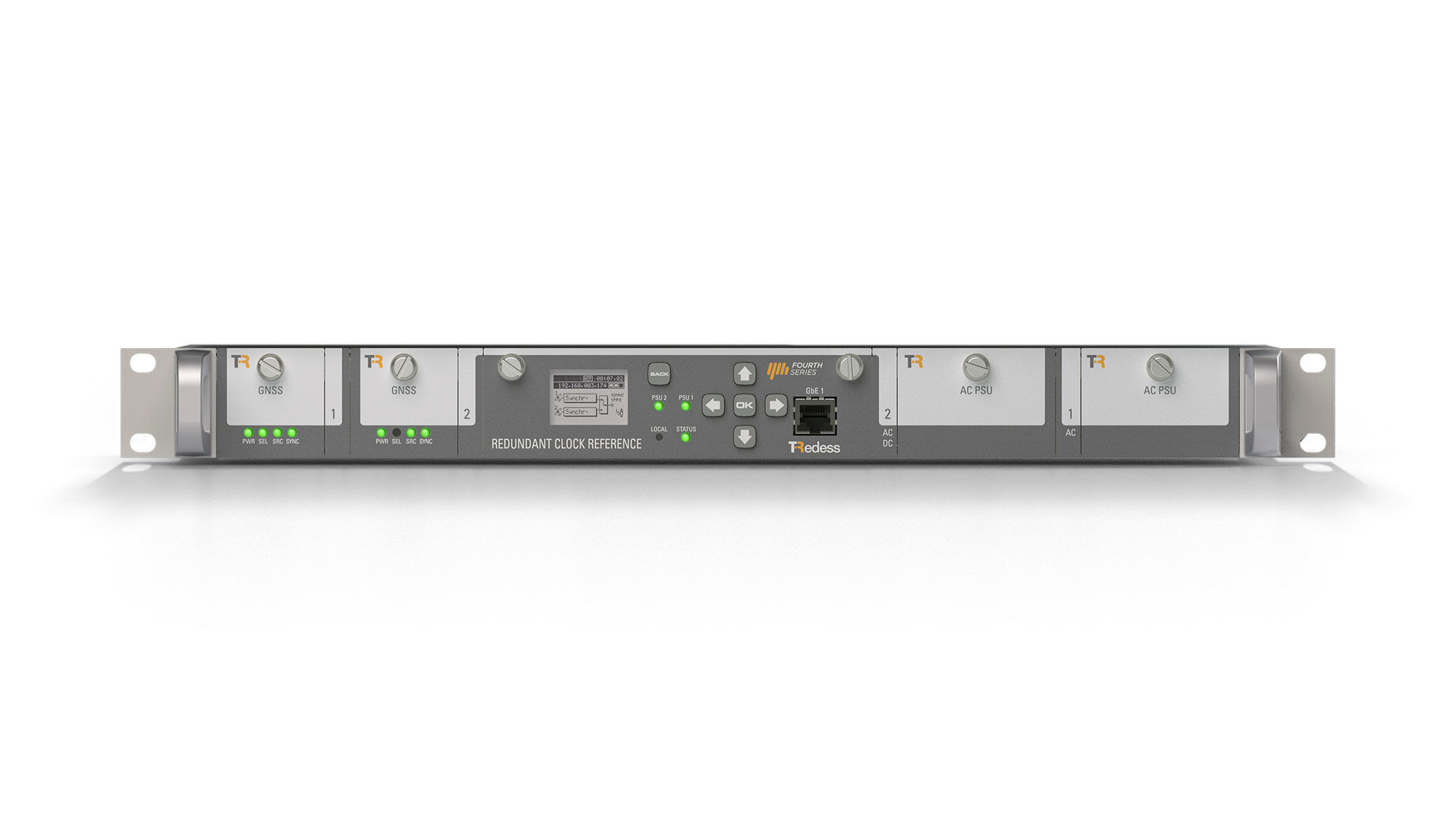
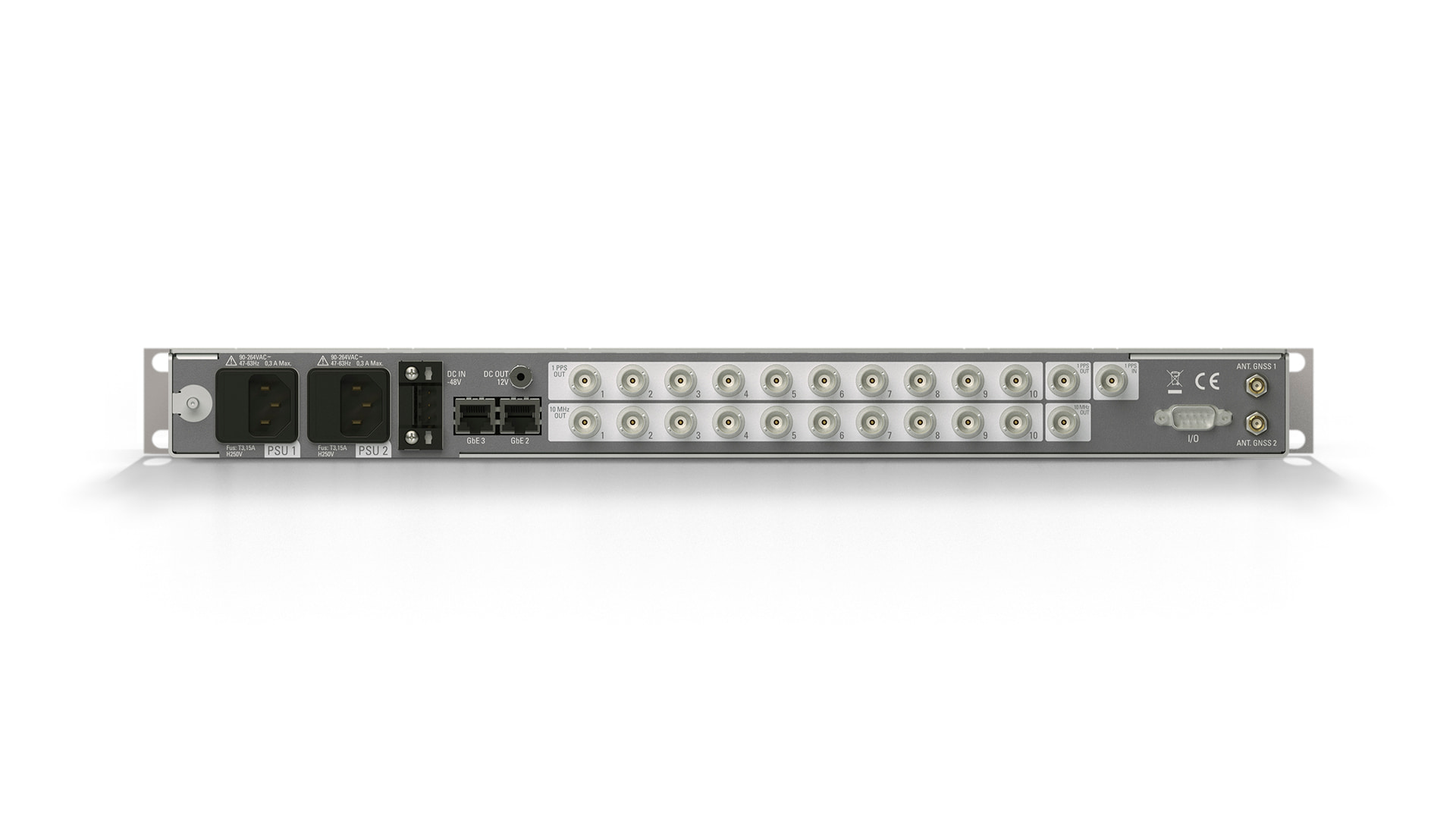
This solution provides accurate and stable time and frequency signals for critical synchronization applications. It also brings total reliability and scalability to the system by including optional redundant parts. In addition, the compact and modular architecture of the equipment is achieved with an immediate/fast replacement of spare modules.
Characteristics
- Modularity and Scalability. Hot-swappable modules:
* Redundant GNSS receivers.
* Redundant high stability and low noise OCXOs.
* Redundant Power Supplies (AC/AC and AC/DC).
- High flexible synchronization sources configuration.
- Multiple outputs: 10+1 pairs of 10MHz and 1PPS output.
- Seamless switching for 10MHz & 1PPS output.
- Advanced GNSS receiver features:
* Concurrent multi-constellation (GPS, Galileo, GLONASS, BelDou) and SBAS operation.
* Concurrent multiband (L1+L2) operation.
* Tracking up to 184 satellites at the same time.
* Built-in security for highest robustness against malicious attacks (jamming & spoofing.
- NTP and PTP clock functionalities: Boundary clock, Grandmaster and Slave according to IEEE 1588 v2.

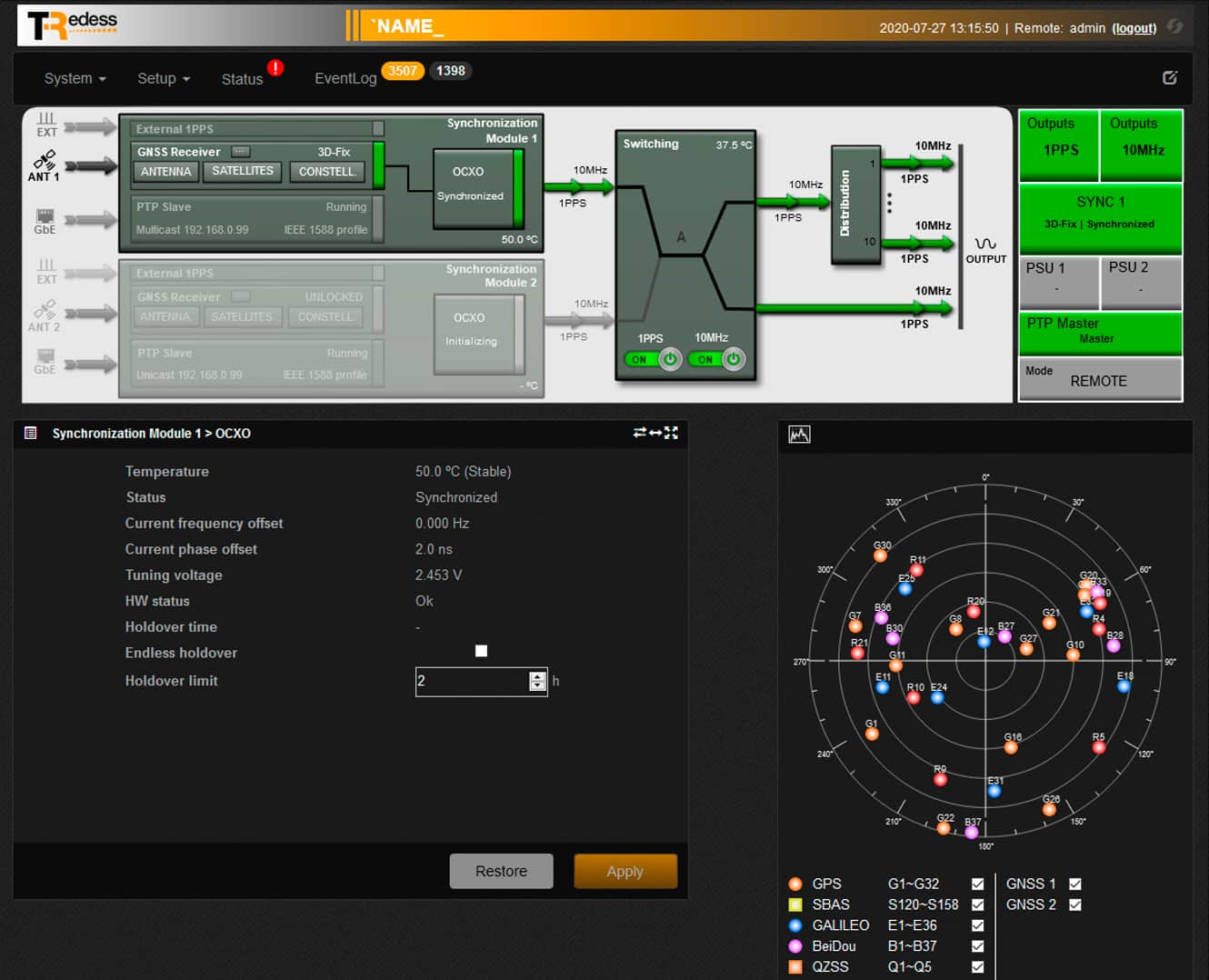
Advanced Features
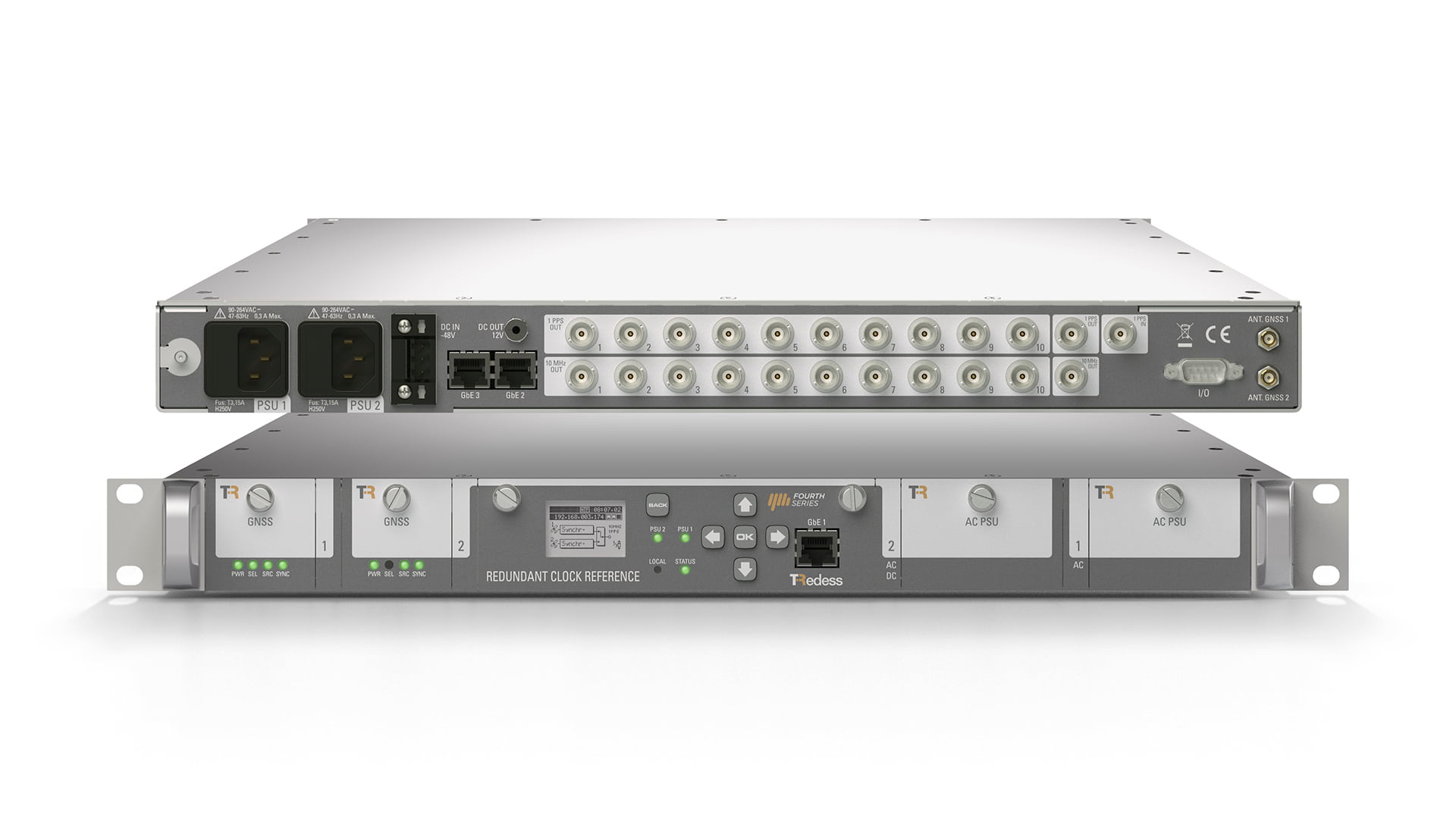
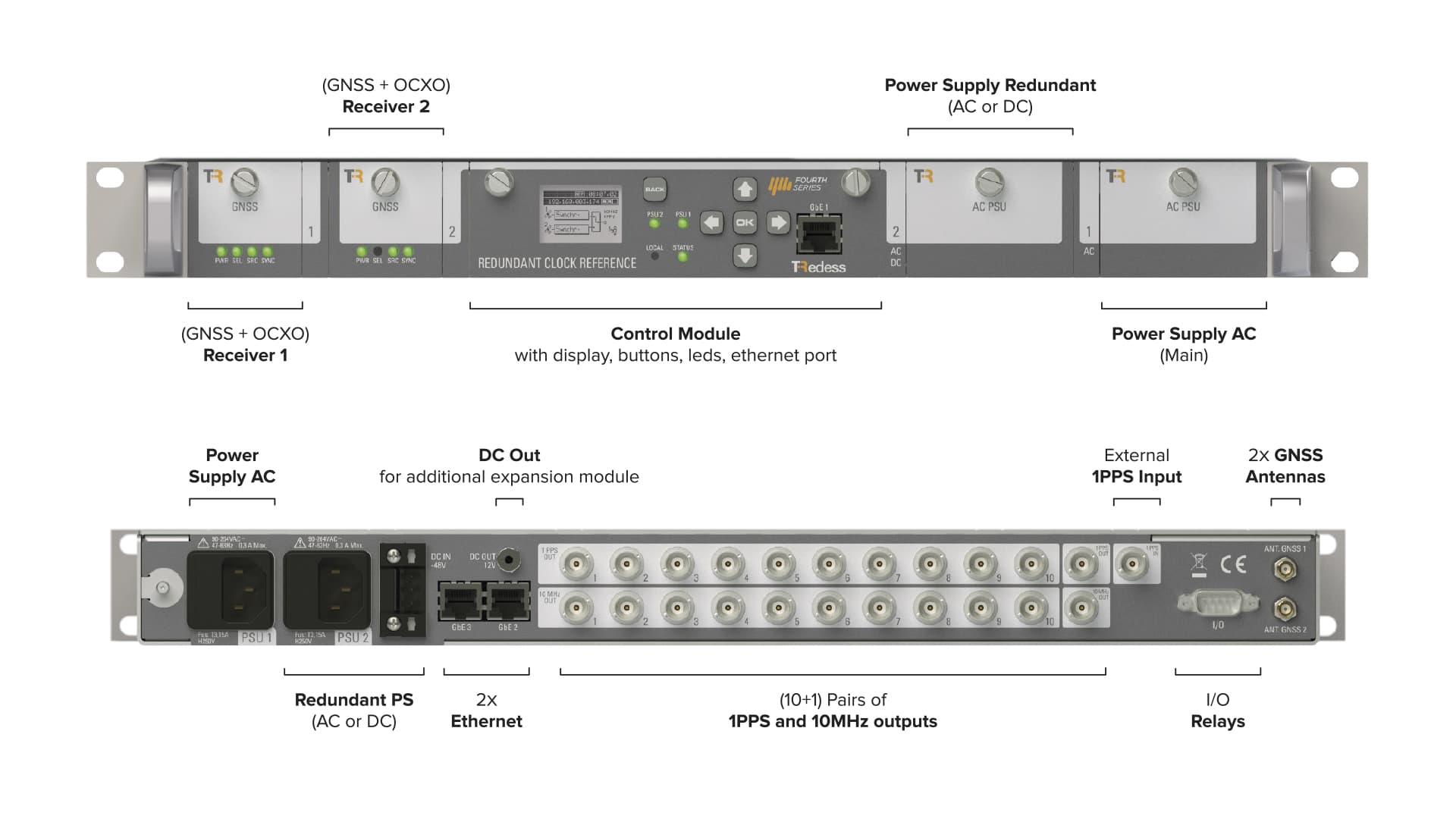
Advantages & Benefits
The TRedess standalone Redundant Clock Reference provides accurate and stable time and frequency signals for critical synchronization applications, covering a wide range of scenarios due to the possibility to internally discipline the internal high performance OCXOs from multiple synchronization input sources, such as multi-band & multi-constellation GNSS receivers, an external 1PPS input source and also PTP master clocks at the same time. The switching between these synchronization sources and OCXOs can be manually or automatically performed without timing/amplitude/phase noise side effects in the 1PPS and 10MHz outputs allowing a totally seamless operation.
This solution brings total reliability and scalability to the system by including two optional redundant GNSS receivers, two redundant OCXOs and also two redundant Power Supplies -both AC/AC and AC/DC-. The high reliability is also guaranteed by a -no wires- internal design. The compact and modular architecture of the equipment -with all modules accessed & extracted from the front side and being hot-swappable- brings also the advantages of an immediate/fast replacement, easy operation and also the optimization and cost of spare modules.
Also, the high port density available at the rear part of the equipment is optimum for the synchronization of many devices at the same time which is optimal in scenarios such as digital TV and radio transmission under SFN, feeding many transmitter and other devices simultaneously with just one equipment on each site. This high density can be even increased using an additional expansion module which can be powered by this unit.
The Multi-Band and Multi-Constellation -up to 4 concurrent constellations- operation of the GNSS receivers make this solution very robust, not anymore dependent of just a single positioning system, and with the capability to track a very high number of satellites.
In addition to that, IEEE 1588 Precision Clock Synchronization Protocol v2 is also supported in multiple modes -Grandmaster, Boundary Clock and Slave Boundary clock-, making this solution also suitable for applications that require precise timing synchronization but lack access to satellite navigation signals. At this respect, several Ethernet ports can be easily assigned for this purpose.
